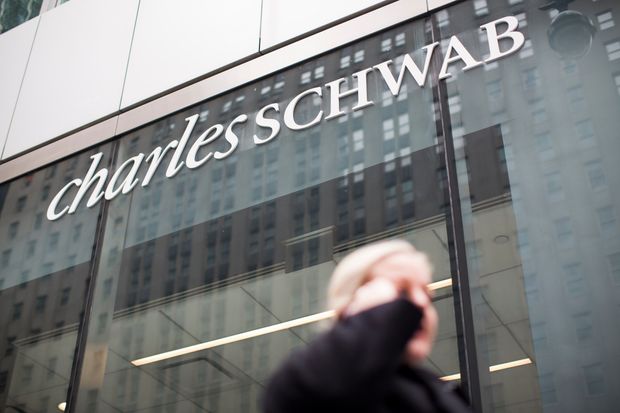Over the past few weeks, the largest custodians in the country announced that they’re reducing the commissions they charge for the trading of stocks and ETFs to zero. Charles, Schwab, Springwater’s custodian and the nation’s largest, got things started on October 1, 2109. TD Ameritrade, E*Trade and Fidelity quickly followed suit.
For those of us serving clients in the investment industry, these announcements weren’t a complete surprise. Commissions have been under pressure for years. We can actually trace this dynamic back to 1975, when federal regulators abolished fixed commissions in the brokerage industry. Up to that point, brokerage firms were required by law to charge the same commission for securities trades. It wasn’t uncommon for investors to pay several hundred dollars for a single stock trade. With deregulation, Charles Schwab saw an opportunity to undercut the large, primarily New York City-based brokerage houses. Schwab launched a discount brokerage firm and profoundly changed the investment industry. Commissions could now be negotiated, and pricing pressure resulted in a dramatic reduction in the cost of buying and selling stocks. Small online trading platforms like Robinhood Markets have offered zero-commission trading for some time.
So, this is good news for investors, since one of the few things you can control is the costs you incur to invest. Now is a good time to recall that there are a few layers of expenses you’ll pay if you choose to work with an independent, fee-only registered investment advisor (or “RIA”).
First, investors pay a management fee to the advisor. This is typically stated as a percentage of the assets under management with the advisor. Historically, the average fee charged by RIA firms for the management of a $1 million portfolio (with no financial planning included) has been about 1.0-1.5% per year. Investors with larger portfolios will generally pay less (on a percentage basis).
Also, most RIA firms use mutual funds and exchange-traded funds (“ETFs”) instead of individual securities (e.g. stock and bonds) to build portfolios for their clients. They typically negotiate commissions with the custodians of their client accounts. So, the commissions paid by investors who manage their own portfolios will be different (i.e. higher) than they would pay if they were working with an RIA firm that used the same custodian. For an example of a commission schedule, you can see Charles Schwab’s. When Springwater moved our clients’ accounts to Schwab a few years ago, we were able to negotiate better trade pricing.

Finally, another cost paid by investors in mutual funds and ETFs is the “expense ratio.” The expense ratio is the total percentage of fund assets used by the fund manager for administrative, management, advertising, and all other expenses. Mutual funds typically haver higher expense ratios than ETFs. We won’t get into the reasons for this today. However, the expense ratios for both mutual funds and ETFs have been under downward pressure. Earlier this year, Fidelity, and then Vanguard, came out with mutual funds that have a 0% expense ratio. This is fairly remarkable. Springwater uses mutual funds and ETFs that have expense ratios much lower than the industry averages.
You might be asking how these brokerage firms can continue to be profitable, as they persistently drive trading costs – and thus their income – down. Part of the answer lies in their ability to use technology to reduce their expenses. They’re able to pass along to investors some of these savings in the form of lower commissions. Another reason is that these firms are incredibly efficient in earning a spread on the cash sitting in investor accounts. As an example, if an investor has cash sitting in Schwab’s bank account, it is earning very near 0% interest. However, Schwab can sweep that cash daily from its customers’ brokerage accounts, invest it through its banking division and earn a rate much closer to 2%. While that “spread” may not seem like much, for large brokerage firm managing millions of accounts (12 million for Schwab) holding billions of dollars, it can add up fast. It’s interesting to note that The Wall Street Journal reported last week that investors are holding 11.4% of their total holdings in cash. That’s higher than in the past and it suggests investors are nervous. It also gives brokerage firms more money with which to earn the spread.
In case you’re wondering, Springwater generally keeps a minimal amount of cash in Schwab Bank for our clients. There will be enough cash to meet distributions over the next 6-12 months and to pay fees and commissions. We invest excess cash in a Schwab money market fund, and expect to earn significantly more interest than Schwab Bank pays on cash deposits.
Zero commissions, and reduced investing costs in general, are good for investors. You can think of those savings as resulting in a higher net return or reducing the investment cost “drag”. If you have a $1 million portfolio and Springwater can reduce your overall investing costs by even 0.25%, your portfolio will effectively gain $2,500. We think that’s significant and we believe you’ll agree.
PLEASE SEE important disclosure information at www.springwaterwealth.com/blog-disclosure/.